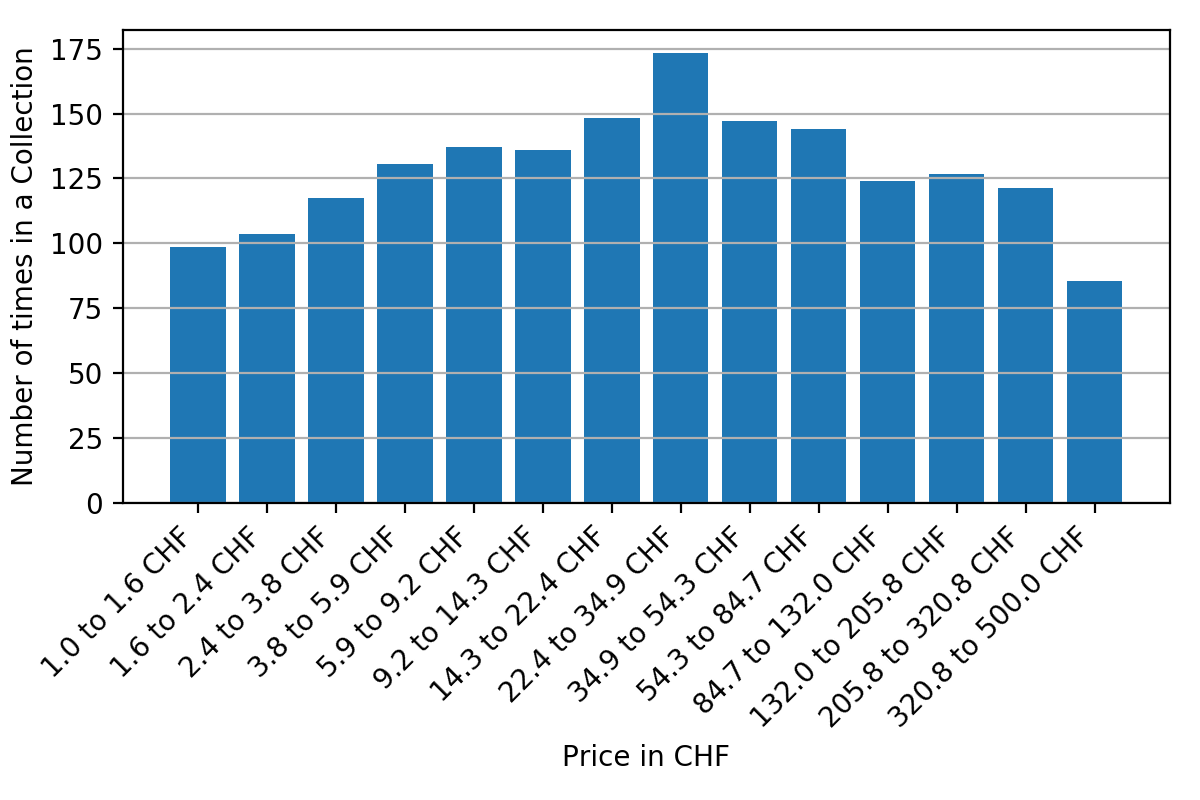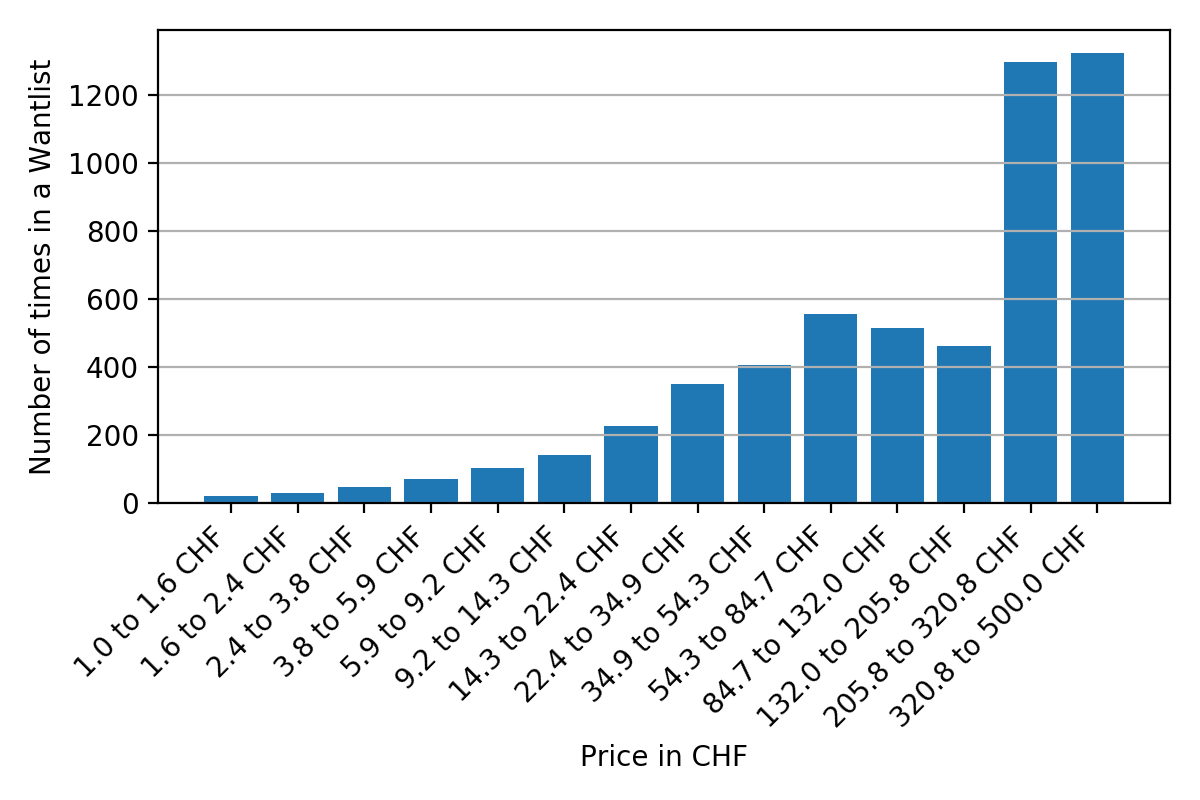Prices, notes, collection... a peek at Discogs' Community dimension
So far, we've discussed masters, releases, labels... But at the end of the chain, there is always a consumer. A consumer that wants the best mixtape, the latest vinyl record of her/his favorite label or this unfindable track that all of her/his friends are looking for. For that, she/he can also use Discogs where each user can keep track of the releases she/he owns by adding them to its « Collection ». One can also use its « Wantlist » for wanted releases. Finally, releases are being graded by users with a note between 0 and 5. Let us see what we can get from those data by looking at one specific genre: House music. The House community is often actively looking for new pressed records to expand their collection, thus we thought that it made sense to focus on this music genre.

On average, House releases sell for 5.3 CHF (on the second hand market), with actually 95% of the sales going for less than 17 CHF. The overall tendency is visible above. Given this very unbalanced repartition, it make more sense to actually consider the logarithm of the price and to focus on lower prices. This results in the figure below:

To help users go through the huge number of releases they can possibly buy from other users, notes are also available to them. So one question has to be asked ? Does good music means expensive music ? In other terms, will expensive records be better rated than cheap ones? Well it turns out they do!

Discogs users seems to be pretty generous when grading, since even the set of releases with the lowest note (releases selling between 1 CHF and 1.4 CHF) almost gets a note of 4. But still, an increasing trend is clearly visible
Finally, it is interesting to compare the "Collection" and the "Wantlist": For vinyl records (and for a lot of stuff in fact), price is highly correlated to scarcity, for instance records pressed in only a couple hundreds of copies will certainly sell at higher price than more common records. Added to this that expensive records are on average better graded, we are thus expecting relatively more expensive records in the Wantlist than in the Collection. Let us see if we were right by looking at the average distribution of the Collection (first figure) and the Wantlist (second figure):


Those looks very different indeed! First of all, the Wantlist is on average 8 times bigger than the Collection (in term of numbers of records). But what's more striking is the difference in the distribution's shape. For the Collection we have a concave curve maxing out at around 35 CHF whereas for the Wantlist, the curve explodes after a small dip... This difference embodies the harsh reality of the music lover, desiring more and more rare and expensive records but being stuck with average and low-costs ones ...